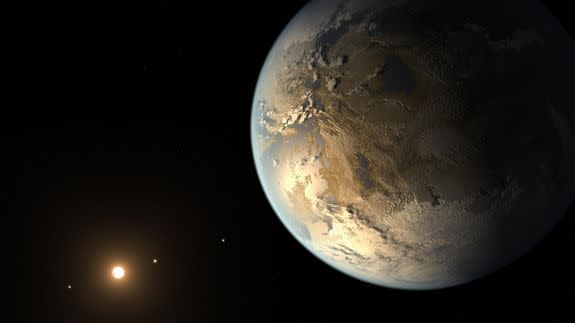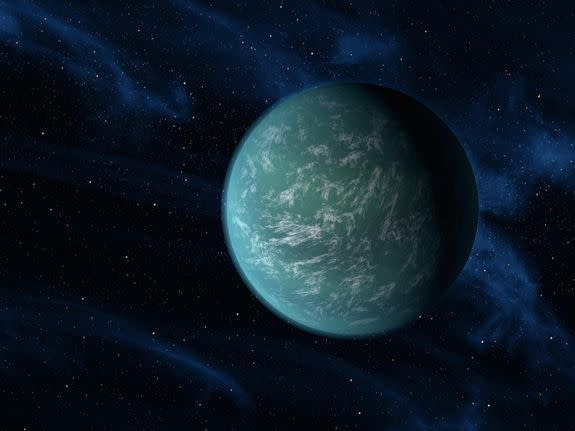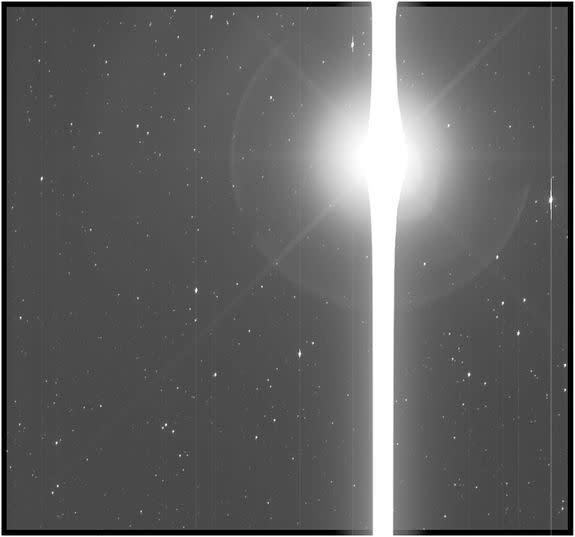A NASA spacecraft that hunts for alien worlds will soon run out of fuel

NASA's Kepler spacecraft has been peering deep into the Milky Way galaxy for nearly a decade. It has spotted over 2,500 confirmed planets orbiting distant stars, and over 2,500 more possible worlds are waiting to be confirmed. Thirty of these confirmed planets live inside their host stars' habitable zones, places where liquid water could exist like it does on Earth.
But Kepler is now running low on gas.
"With nary a gas station to be found in deep space, the spacecraft is going to run out of fuel," Charlie Sobeck, the system engineer for the Kepler space telescope mission, said in a NASA statement.
"We expect to reach that moment within several months."
SEE ALSO: Thousands of SpaceX Starlink satellites could pose 'unprecedented' space junk problem
NASA placed the Kepler telescope 94 million miles away from Earth, in an orbit around the sun. This way, Earth's gravity and reflected light don't interfere with Kepler's precise measurements of distant planets.
Out there, in the void, it's extremely unlikely that Kepler will become a threatening piece of space junk that could pose collision hazards to other satellites.

Image: NASA
"Deep space missions like Kepler are nowhere near Earth or sensitive environments, which means we can afford to squeeze every last drop of data from the spacecraft," said Sobeck.
It's incredible that Kepler is still working at all.
In 2013, a wheel used to keep the spacecraft pointed in the right direction broke, meaning that Kepler's entire mission — which hinged on pointing in one specific direction — had to change.
However, NASA found a way to temporarily stabilize the telescope for months at a time by using pressure from sunlight, "like a kayak steering into the current," said Sobeck.

Image: nasa
Since then, Kepler has spotted hundreds more exoplanets, over 300 of which have been confirmed.
When Kepler spots an exoplanet, however, it doesn't actually capture an image of the distant planetary body — they're much too far away. Instead, Kepler watches a star for dips in brightness as a planet occasionally transits in front of the distant star.
NASA scientists can then judge the size and possible composition of the exoplanet based upon how long it took to travel around the star and how much light the planet temporarily blocked.

Image: nasa
Although Kepler will soon be spent and left to its long, lonely orbit in space, the spacecraft will soon be replaced by another exoplanet-hunting space telescope, NASA's Transiting Exoplanet Survey Satellite (TESS).
TESS is set to launch into space on April 16.
"TESS will search nearly the entire sky for planets outside our solar system, focusing on the brightest stars less than 300 light-years away, and adding to Kepler’s treasure trove of planet discoveries," said Sobeck.
WATCH: 'I'm not afraid of death, but I'm in no hurry to die.': some of Stephen Hawking's most inspirational quotes.
